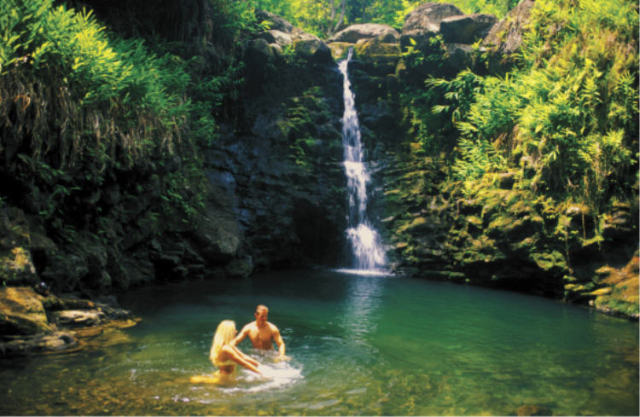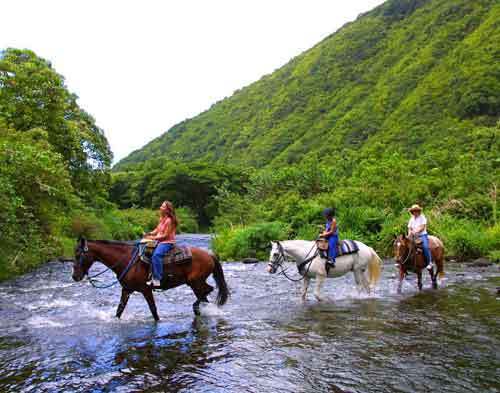There was an explosion at the Halemaumau Crater, Kilauea Volcano, Hawaii Volcanoes National Park on 3/19/2008. Rocks shot from the Wednesday’s explosion damaged a wooden fence that visitors used to peer into the crater and created hazards across nearby roads and paths.
Areas in the park that are shut because of explosive debris or high sulfur dioxide levels are:
• Crater Rim Drive between Kilauea Military Campsouth/southeast to Chain of Craters Road.
• Crater Rim Trail from Jaggar Museum parking lot south/southeast to Chain of Craters Road.
• All trails leading to Halema`uma`u crater are closed including those from Byron Ledge, ‘Iliahi (Sandalwood) Trail, and Ka’u Desert Trail.
Rocks shot from the explosion damaged a wooden fence that visitors used to peer into the crater and created hazards across nearby roads and paths.
Excerpt from USA Today:
By Dave Dondoneau and Dan Nakaso, The Honolulu Advertiser
HONOLULU — Plumes of smoke billowed out of Kilauea volcano Thursday, and visitors were kept at least a mile away from the scene of the volcano’s first explosion in 84 years.
Scientists who monitor instruments measuring activity at Kilauea volcano were surprised by the explosion that occurred at 2:58 a.m. Wednesday. The blast scattered boulders and smaller rocks over 75 acres of Hawaii Volcanoes National Park on the Big Island of Hawaii, said Steve Brantley, deputy scientist in charge of the U.S. Geological Survey’s Hawaiian Volcano Observatory.
COMPLETE COVERAGE: Honolulu Advertiser
Scientists do not know whether — or when — a similar explosion will occur, Brantley said. There were no reported injuries, but falling rocks — including a boulder about 3½ feet in diameter — damaged the popular Halemaumau lookout and its parking lot. Rubble was scattered along Crater Rim Drive, the road that visitors use to drive through the park, Brantley said.
The explosion at Halemaumau crater was the first since 1924.
“There have not been any additional explosions since the one early Wednesday morning,” Brantley said.
Scientists at the Hawaiian Volcano Observatory did not know what to expect in the coming days or weeks.
“It’s very exciting for all of us,” said Jim Gale, chief of interpretation at the observatory. “It’s such a change from the overall activity I’ve seen in my seven years here.
“We’re exploring new worlds,” said Jim Kauahikaua, scientist-in-charge at the observatory. “The recent explosive event represents a significant addition and change to Kilauea volcano’s ongoing activity, and the Hawaiian Volcano Observatory is using every means available to study its causes and consequences.”
Gale said most of the park remains safe and open, but 1 mile of Crater Rim Drive was closed from Kilauea Military Camp to Jaggar Museum as a precaution.
Sulfur dioxide levels have been on the rise at Kilauea since December, Gale said. “There’s enough sulfur dioxide being put out at the Kilauea summit right now to fill 150 Goodyear blimps a day,” he added. “It is a concern.”
The sulfur dioxide gasses pose a health risk, especially to people who suffer from asthma and chronic coughing, observatory geochemist Jeff Sutton said.
Fire and police authorities made emergency plans to evacuate nearby villages if the winds blew toxic gasses in their direction, said Duane Hosaka at Hawaii County Civil Defense. The volcano’s gas emissions have moved toward the sea, rather than over populated areas.
One mile outside of Hawaii Volcanoes National Park, a handful of visitors canceled reservations at the 14-room Kilauea Lodge and Restaurant after inaccurate rumors spread that the park service was evacuating people after the explosion, said Janet Coney, the lodge’s office manager. “They’re not evacuating,” Coney said.
“To me, there’s a lot of excitement,” she said. “I hope the mountain doesn’t go. But with Mother Nature, you never know what could happen. You have to take one day at a time.”




 Hike
with an expert guide in Hawai'i Volcanoes National Park, in the rain
forests, deep in remote valleys, and explore hidden waterfalls
Hike
with an expert guide in Hawai'i Volcanoes National Park, in the rain
forests, deep in remote valleys, and explore hidden waterfalls
 Enjoy
a picturesque Hawaiian horseback ride through the Valley of the
Kings, a lush tropical paradise of jungle trails, waterfalls, and spiritual sites.
Enjoy
a picturesque Hawaiian horseback ride through the Valley of the
Kings, a lush tropical paradise of jungle trails, waterfalls, and spiritual sites.
